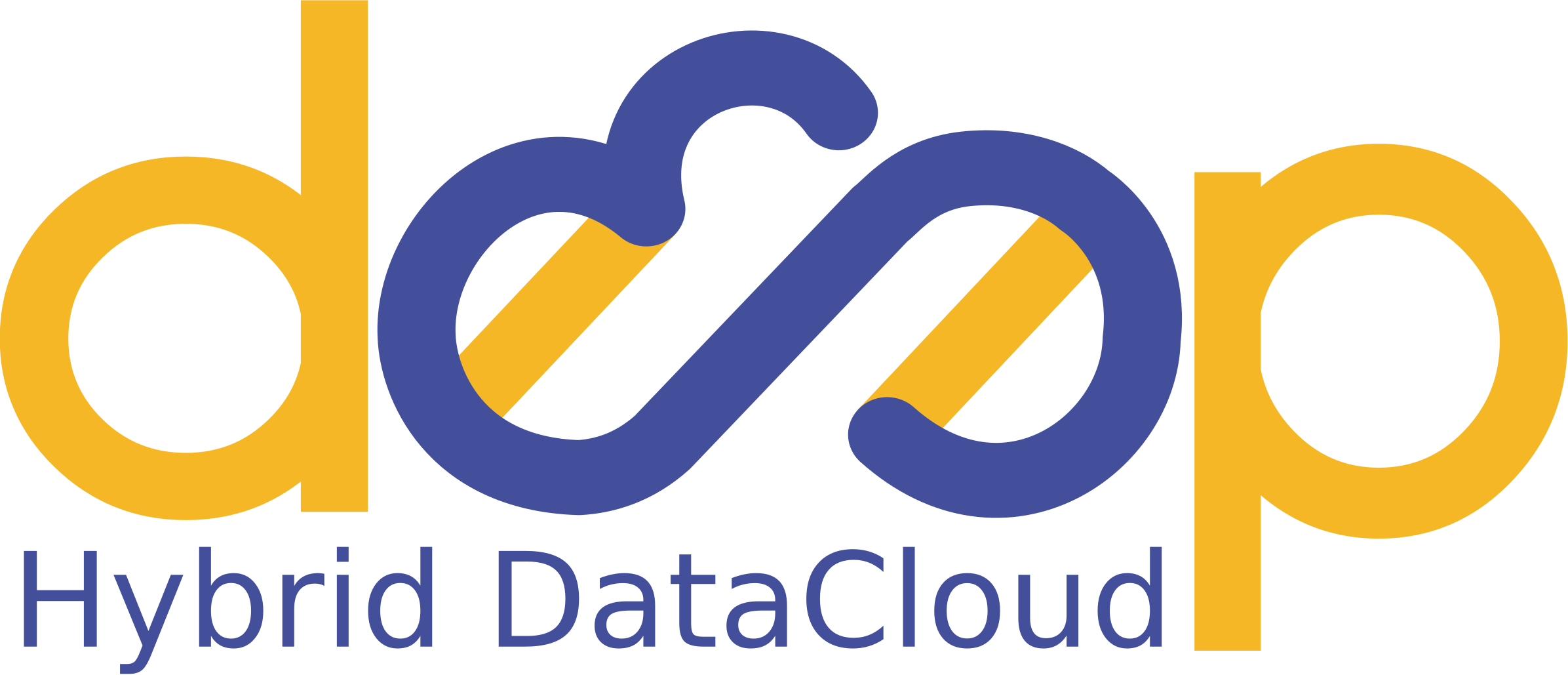⚠️ Warning: This is a fork from the INDIGO PaaS Orchestrator - Simple Graphical UI that is being customized to accomodate ML/DL workloads over the DEEP services. This is still work in progress. A preliminary version is deployed here.
- IAM authentication
- Display user's deployments
- Display deployment details and template
- Delete deployment
- Create new deployment
The deep-training-dashboard is a Python application built with the Flask microframework; Flask-Dance is used for Openid-Connect/OAuth2 integration.
The docker image uses Gunicorn as WSGI HTTP server to serve the Flask Application.
-
Register a client in DEEP-IAM with the following properties:
- redirect uri:
https://<DASHBOARD_HOST>:<PORT>/login/iam/authorized. - scopes:
openid,email,profile,offline_access. - introspection endpoint enabled.
- redirect uri:
-
Clone the tosca-templates repository to get a set of tosca templates that the dashboard will load, e.g.:
git clone https://github.com/indigo-dc/tosca-templates -
Create a
config.jsonfile in/app(see the example) an replace the values with yourIAM_CLIENT_ID,IAM_CLIENT_SECRETandTOSCA_TEMPLATES_DIR. If you want that the reload requests (to update Tocas and modules list) from Github to be authenticated (so to ensure that they only come from your Github webhooks) you have to setGITHUB_SECRETto be the same as Github's webhook secret (see "Keeping the Dashboard updated" below).{ "IAM_CLIENT_ID": "my_client_id", "IAM_CLIENT_SECRET": "my_client_secret", "IAM_BASE_URL": "https://iam.deep-hybrid-datacloud.eu", "ORCHESTRATOR_URL": "https://paas.cloud.cnaf.infn.it/orchestrator", "SLAM_URL": "https://paas.cloud.cnaf.infn.it:8443", "CMDB_URL": "http://paas.cloud.cnaf.infn.it/cmdb", "IM_URL": "https://paas.cloud.cnaf.infn.it/im", "MONITORING_URL": "https://deep-paas.cloud.ba.infn.it/monitoring-wrapper", "TOSCA_TEMPLATES_DIR": "../tosca-templates/deep-oc", "COMMON_TOSCAS": { "default": "deep-oc-marathon-webdav.yml", "minimal": "deep-oc-marathon-minimal.yml" }, "MODULES_YML": "https://raw.githubusercontent.com/deephdc/deep-oc/master/MODULES.yml", "GITHUB_SECRET": "", "SUPPORT_EMAIL": "deep-support@listas.csic.es", "EXTERNAL_LINKS": [ { "url": "https://marketplace.deep-hybrid-datacloud.eu", "menu_item_name": "DEEP Marketplace" }, { "url": "https://docs.deep-hybrid-datacloud.eu", "menu_item_name": "Documentation" }, { "url": "https://deep-hybrid-datacloud.eu", "menu_item_name": "DEEP-Hybrid-DataCloud project page" } ], "LOG_LEVEL": "info", "ENABLE_ADVANCED_MENU": "yes" } -
Enable HTTPS
You need to run the deep-training-dashboard on HTTPS (otherwise you will get an error); you can choose between
- enabling the HTTPS support
- using an HTTPS proxy
Details are provided in the next paragraphs.
You would need to provide
- a pair certificate/key that the container will read from the container paths
/certs/cert.pemand/certs/key.pem; - the environment variable
ENABLE_HTTPSset toTrue
Run the docker container:
docker run -d -p 443:5001 --name='deep-training-dashboard' \
-e ENABLE_HTTPS=True \
-v $PWD/cert.pem:/certs/cert.pem \
-v $PWD/key.pem:/certs/key.pem \
-v $PWD/config.json:/app/app/config.json \
-v $PWD/tosca-templates:/opt/tosca-templates \
indigodatacloud/deep-training-dashboard:latestAccess the dashboard at https://<DASHBOARD_HOST>/
Example of configuration for nginx:
server {
listen 80;
server_name YOUR_SERVER_NAME;
return 301 https://$server_name$request_uri;
}
server {
listen 443 ssl;
server_name YOUR_SERVER_NAME;
access_log /var/log/nginx/proxy-paas.access.log combined;
ssl on;
ssl_protocols TLSv1 TLSv1.1 TLSv1.2;
ssl_certificate /etc/nginx/cert.pem;
ssl_certificate_key /etc/nginx/key.pem;
ssl_trusted_certificate /etc/nginx/trusted_ca_cert.pem;
location / {
# Pass the request to Gunicorn
proxy_pass http://127.0.0.1:5001/;
proxy_set_header X-Real-IP $remote_addr;
proxy_set_header X-Forwarded-For $proxy_add_x_forwarded_for;
proxy_set_header X-Forwarded-Proto https;
proxy_set_header Host $http_host;
proxy_redirect http:// https://;
proxy_buffering off;
}
}
Run the docker container:
docker run -d -p 5001:5001 --name='deep-training-dashboard' \
-v $PWD/config.json:/app/app/config.json \
-v $PWD/tosca-templates:/opt/tosca-templates \
indigodatacloud/deep-training-dashboard:latest
⚠️ Remember to update the redirect uri in the IAM client tohttps://<PROXY_HOST>/login/iam/authorized
Access the dashboard at https://<PROXY_HOST>/
If you want the Dashboard to keep updated with the changes in the TOSCA repos or the modules list you will have to configure a Github webhook in those repos (for example [1] and [2]) so that any pushes in those repos trigger an update in the Dashboard.
The webhooks have to be configured as following:
- Payload URL:
<dashboard_url>/reload - Content type:
application/json - Secret: Has to be the same as
GITHUB_SECRETin the config. - Enable SSL is you are running over HTTPS and have valid certificates.
- Just the
pushevents. - Mark as Active.
Repo examples:
You can change the number of gunicorn worker processes using the environment
variable WORKERS. E.g. if you want to use 2 workers, launch the container
with the option -e WORKERS=2 Check the
documentation
for ideas on tuning this parameter.
git clone https://github.com/indigo-dc/deep-training-dashboard.git
cd deep-training-dashboard
docker build -f docker/Dockerfile -t deep-training-dashboard .To run the created image you have to export the config.json file (with your credentials) inside
the docker container:
docker run -d -p 5001:5001 -v $PWD/config.json:/app/app/config.json deep-training-dashboardThe dashboard will be accessible at http://0.0.0.0:5001 . You can also choose to run image hosted on DockerHub:
docker run -d -p 5001:5001 -v $PWD/config.json:/app/app/config.json indigodatacloud/deep-training-dashboardgit clone https://github.com/indigo-dc/deep-training-dashboard.git
cd deep-training-dashboard
python3 -m venv venv
source venv/bin/activate
pip3 install -r requirements.txtStart the dashboard app with Flask:
FLASK_app=orchdashboard flask run --host=0.0.0.0 --cert cert.pem --key privkey.pem --port 443or with Gunicorn:
gunicorn --certfile=cert.pem --keyfile=key.pem --bind 0.0.0.0:443 orchdashboard:app --daemonIf you see problems with the SLAM interaction, you would need to specify the
certificate to be used to verify the SSL connection. You can pass the path to
a CA_BUNDLE file or directory with certificates of trusted CAs setting the
parameter SLAM_CERT in the config.json file:
{
...
"SLAM_URL": "https://indigo-slam.cloud.ba.infn.it:8443",
"SLAM_CERT": "/path/to/certfile"
}If you are running the docker container, you need to ensure that the cert file
is available inside the container in the path set in the SLAM_CERT parameter,
i.e. you would use a bind mount (-v $PWD/certfile:/path/to/cerfile)
